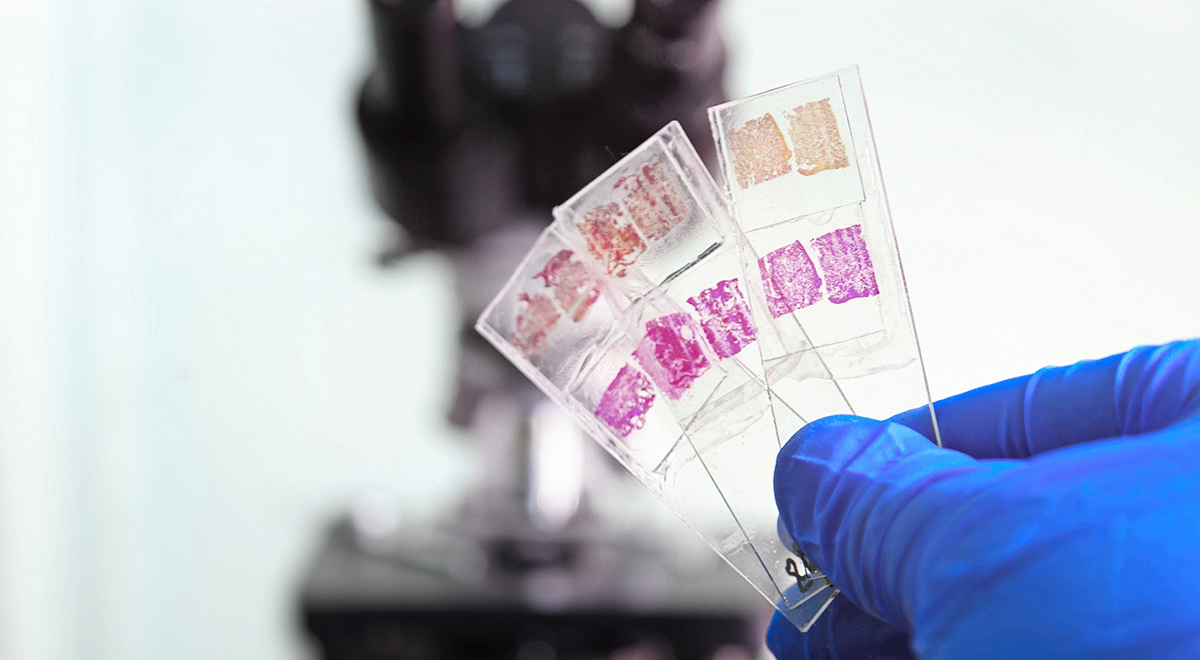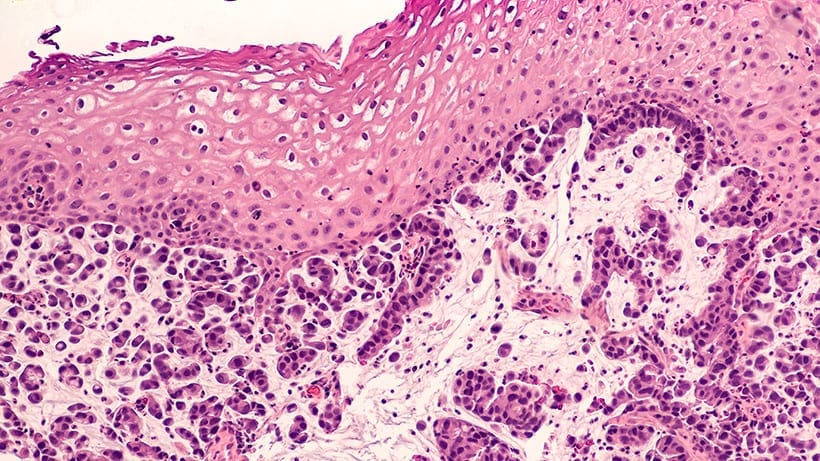FFPE or Frozen Tissue – How to Choose Between Their Pros and Cons?

FFPE or frozen tissue is a very common question during the initial design of a solid tissue collection project. Preserved human solid tissue comes in two forms – Formalin-Fixed Paraffin-Embedded (FFPE) or snap-frozen. Both methods have their advantages and disadvantages, and choosing one over the other depends on the study's needs and methodology. Here, we will discuss and compare the characteristics of these two techniques and the downstream applications they are most appropriate for.
Following biopsy analysis, preserved tissue samples are usually collected in hospital-associated biobanks, research centers, or private companies supporting biomedical research. Such human-derived biospecimens display unique storage capacities for disease-relevant molecular information. Therefore, they are an invaluable source not only for patients diagnosis and choice of treatment but also for the advancement of innovative biomedical research. For example, the current driving forces of personalized cancer treatment, innovative therapies, biomarker research, and target identification, are largely reliant on the availability of biopsy-derived tissue biospecimens.
FFPEs – The Classic Format
FFPE block preparation is the classical method for post-biopsy pathological analysis of the tissue's malignancy status 1. The technique consists of tissue fixation in formaldehyde, followed by paraffin embedding into a solid block, which can be stored for long periods at room temperature.
Although this procedure is time-consuming and involves toxic solutions, it is very compatible with tissue collection during surgery as surgeons only need to submerge the tissue in formaldehyde. Another advantage of FFPEs that makes them the most prominent specimen in biobanked collections is their undemanding storage conditions.
However, a persisting issue regarding FFPE samples is the lack of standardization in their preparation across institutions and laboratories. For example, mistakes due to inexperienced personnel, such as prolonged fixation time, can significantly affect the quality of the tissue. Additionally, as the variations in how this time-consuming procedure is conducted are rarely noted, there can be a significant level of bias within the results obtained from biobanked FFPE samples, which could ultimately render these extensive collections worthless. Establishing standard operating procedures in FFPE preparation is key for the future of FFPE biobanks and their contribution to biomedical research advancement.
Frozen tissue – a promising alternative
Snap freezing (SF) consists of immersing the tissue piece in liquid nitrogen to induce sudden cryopreservation. Frozen tissues are often embedded in Optimal Cutting Temperature compounds.
This method is relatively new to clinicians, and biobanks are not as well adapted to it as to FFPEs. Although there are several reasons behind this, frozen preparations are gaining more attention in tissue preservation practices due to the advantages they bring to the table.
Compared to FFPEs, the process of freezing tissue is less complicated, time-consuming, and does not involve toxic chemicals, but storage is more demanding. The need for liquid nitrogen containers and the availability of a -80°C freezer close to surgery rooms are the main obstacles in using the method alongside surgical tissue removal. The -80°C requirement is also a major drawback for choosing frozen samples over FFPEs in biobanking 2. Frozen collections also cannot last as long as FFPEs, and their maintenance is way more costly and demanding.

FFPE or frozen tissue - How to match the preservation method to the downstream analysis?
FFPEs are the most suitable format for morphological analysis, making them the preservation method of choice for biopsy and tissue malignancy status determination. On the other hand, the formaldehyde fixation creates a significant crosslinking, altering the native structure of proteins and damaging antigens and epitopes, especially for post-translational modifications. Although formaldehyde fixation limits the use of FFPEs for immunostaining experiments, this format remains the sample of choice for simultaneous morphological and immunohistochemical (IHC) analysis.
In terms of applications, snap-frozen tissue is not a good choice for morphological studies as ice formation within the tissue can occur during the freezing and damage the sample's morphology. However, with this method, the tissue is preserved in its native state and is well-suited for immunohistochemical stainings. Not only antigens and epitopes but also DNA and RNA molecules are better preserved with freezing technology 3. It is also considered a better option for mass spectrometry and western blot analysis.
FFPEs as well offer an excellent information preservation system, as DNA and RNA molecules can be isolated from the tissue blocks. However, it has been demonstrated that the molecules are characterized by significant artifacts that must be considered during analytical phases. Because of the broad availability of FFPEs in biobank institutions, life science companies are developing specialized DNA extractions kits aiming to optimize the quality of the extracted molecules.
Current trends and future directions – leveraging a well-working duo
Trends are rapidly changing in the biomedical research field. Surgery rooms are starting to open their doors to frozen samples as the speed of preparation plays an advantage in this method.
For example, surgeons at Mayo Clinic have already implemented snap-freezing of removed breast or head and neck tumor tissue. The method is used to validate the cancer margins and ensure the complete removal of all malignant tissue. The most significant advantage of this approach is that it gives the possibility to conduct this evaluation when the patient is still in the surgery room and thus prevents a second surgery in the cases where not all tumor tissue has been removed 4. This is not possible when using FFPE samples as they take a lot longer to prepare and analyze.
The use and applications of both methods are based on a delicate balance between their positive and negative aspects. FFPEs' convenient storage conditions and presence in surgical practice make them the more prominent sample across biobanks. Hard to find and rare indications are much more likely to be available in this format. However, the poorer quality of FFPEs and the lack of standardization in their preparation drive the requirements for a second verification step of the obtained results on frozen samples. The complementation between the two methods is likely to grow deeper in the future to support faster and more precise result generation and validation.
Audubon offers vast collections of both frozen and FFPE samples and we have the necessary capacity to conduct your custom collections according to your project's needs. Our team understands the fine balance between the advantages and limitations of both solid tissue preservation methods and our experts can guide you through the design of your collection and assist you during every step of the way.
If you want to learn more, check our frozen tissues and FFPE product pages or get in touch with our team!
References:
- Gaffney, E. F., Riegman, P. H., Grizzle, W. E. & Watson, P. H. Factors that drive the increasing use of FFPE tissue in basic and translational cancer research. Biotech. Histochem. 93, 373–386 (2018).
- Ripoli, F. L. et al. A comparison of fresh frozen vs. Formalin-fixed, paraffin-embedded specimens of canine mammary tumors via branched-DNA assay. Int. J. Mol. Sci. 17, (2016).
- Esteva-Socias, M., Gómez-Romano, F., Carrillo-Ávila, J. A., Sánchez-Navarro, A. L. & Villena, C. Impact of different stabilization methods on RT-qPCR results using human lung tissue samples. Sci. Rep. 10, 1–11 (2020).
- Jorns, J. M. et al. Intraoperative Frozen Section Analysis of Margins in Breast Conserving Surgery Significantly Decreases Reoperative Rates. Am. J. Clin. Pathol. 138, 657–669 (2012).

